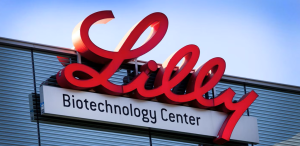Eli Lilly Hits $1 Trillion—But 2026 Wild Ride Awaits: 20% Steady Gains or 100% Moonshot?
Eli Lilly became the first healthcare company in history to reach a $1 trillion market capitalisation on Friday,

Quick overview
- Eli Lilly became the first healthcare company to reach a $1 trillion market capitalization, briefly hitting this milestone during trading.
- The company's stock has surged over 36% this year, driven by the success of its diabetes medication Mounjaro and weight-loss injection Zepbound.
- Wall Street analysts are overwhelmingly bullish on Eli Lilly, with many issuing a 'Strong Buy' rating amid expectations for a $150 billion obesity medication market by 2030.
- Potential risks include high stock valuation, new Medicare cost caps for weight-loss drugs, and increasing competition from other pharmaceutical companies.
Eli Lilly became the first healthcare company in history to reach a $1 trillion market capitalisation on Friday, joining the exclusive group of tech giants. During morning trading, Eli Lilly briefly hit a market cap of $1 trillion before pulling back.

The latest share price was $1,048. After Warren Buffett’s Berkshire Hathaway, Eli Lilly is the second non-technology company in the U.S. to reach this coveted $1 trillion milestone.
The drugmaker’s stock has surged by over 36 per cent this year as investors celebrate its gains over main competitor Novo Nordisk in the GLP-1 drug market. The company’s stock, based in Indianapolis, has soared thanks to the success of diabetes medication Mounjaro and weight-loss injection Zepbound.
This achievement caps off an incredible year for LLY shares, which have outperformed the S&P 500 and increased by more than 36% so far. Strong sales from Mounjaro (tirzepatide for diabetes) and Zepbound (tirzepatide for weight loss) have been key drivers. Together, they generated over $10 billion in revenue in Q3 2025—a 109 per cent year-over-year increase for Mounjaro alone. Investors are betting on Lilly’s edge over competitor Novo Nordisk in the “obesity arms race,” as clinical data shows its dual-hormone mechanism (GLP-1 + GIP) improves blood sugar control and promotes weight loss.
Wall Street remains overwhelmingly bullish on LLY, with 20–25 analysts from major firms issuing a “Strong Buy” rating. The expected $150 billion obesity medication market by 2030, in which Lilly and Novo Nordisk are predicted to hold the largest shares, fuels the hype. Future catalysts include increased insurance coverage, potentially boosting accessibility and sales, and FDA approval for an oral version of its obesity medication orforglipron (targeted for March 2026).
However, forecasts vary due to the stock’s high valuation and potential risks, including price pressure from new agreements under the Trump administration, which caps Medicare costs for weight-loss drugs at $150 per month starting in 2026, as well as intensifying competition from Pfizer and others. By the end of 2025, the stock is expected to range between $1,000 and $1,062, with a slight decline from current levels after this year’s rally.
Eli Lilly, named after a Union veteran of the U.S. Civil War and a pharmaceutical chemist, established the company bearing his name. It has long been a leader in diabetes treatment, especially after introducing the first commercial insulin in 1923. By 1952, Eli Lilly was listed on the New York Stock Exchange as a publicly traded company. For many years, its profits and revenue stemmed from a diverse array of popular products, including the first polio vaccine, insulin, and the antidepressant Prozac.
- Check out our free forex signals
- Follow the top economic events on FX Leaders economic calendar
- Trade better, discover more Forex Trading Strategies
- Open a FREE Trading Account